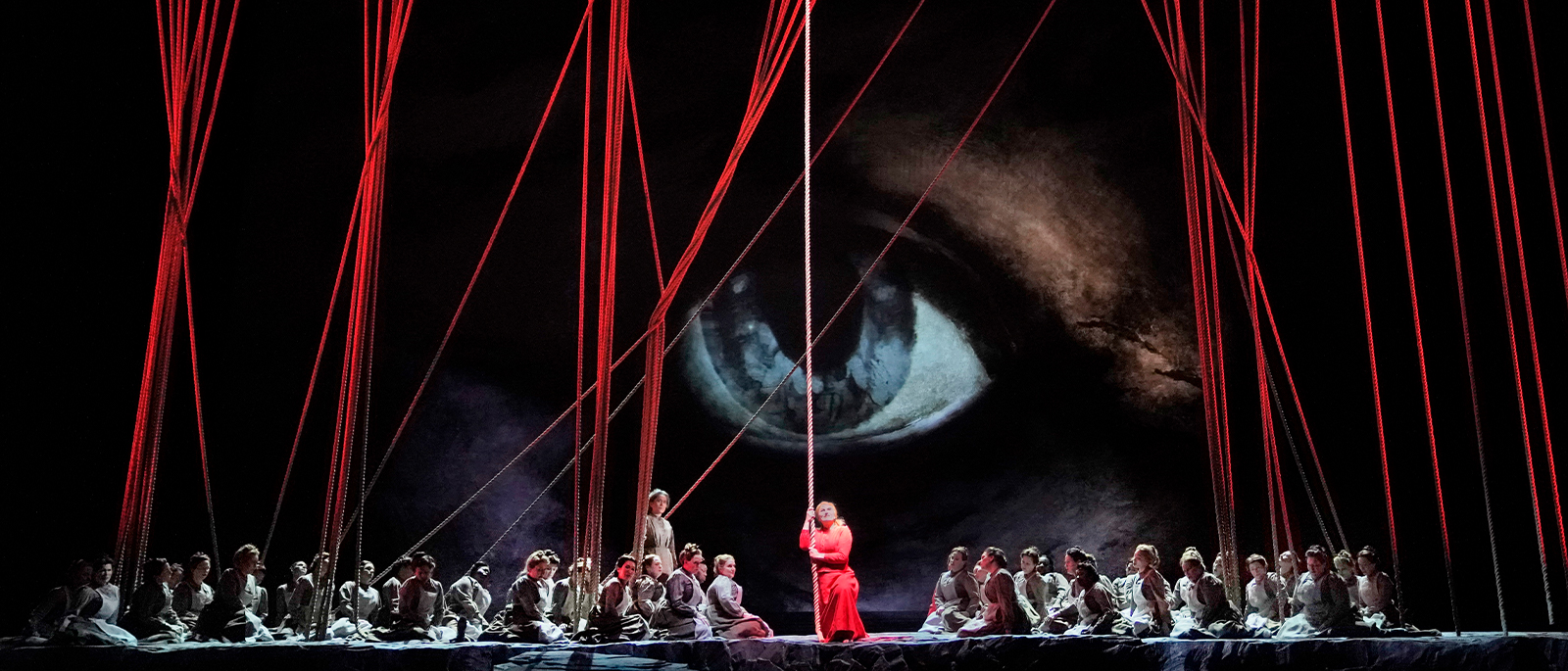
Peak Chorus
When the incomparable Met Chorus appeared in the new production of Lohengrin last February, The New York Times hailed it as “both stentorian and evocative … its ethereal singing was almost more felt than heard.” On May 30, the chorus plays a major part in another stirring Wagner masterpiece, the haunting Der Fliegende Holländer (The Flying Dutchman). Maestro Donald Palumbo, the company’s indefatigable chorus master, recently spoke to the Met’s Christopher Browner about preparing Wagner’s ghostly drama, some of his favorite moments from this season, and the musical summits that lie ahead.
The last time the Met presented Der Fliegende Holländer was March 10, 2020, just two days before the opera house closed due to the pandemic. Have you been able to pick up where you left off?
In a way, yes. It would have been nice to continue that run because with a difficult opera like this, we need repetition to fine tune everything. Fortunately, as we revisit Dutchman, most of the same choristers are back, so we can get back to where we were with our study of the music as if we had the whole run behind us.
What makes it a “difficult opera” where the chorus is concerned?
The second-act music for the women is extremely difficult. During Senta’s Ballad, they have interjections that are almost a cappella, which can be difficult to keep in tune and sustain in a very slow tempo. Immediately after, there’s tricky three-part writing with rapid-fire eighth-notes coming nonstop with a lot of text. And the men have the challenging double chorus when the offstage ghost chorus arrives in Act III. The tempo for both choruses is the same, but they sing in conflicting rhythms. It’s very complicated.
How does your work on Lohengrin carry over to Dutchman?
Only ten percent of the chorus had sung Lohengrin before, so we did intensive work with the German text. With Wagner, there’s a different style of how you take a note and almost grab onto it, launching the final consonant out of the vowel. Since words don’t end in vowels like in French or Italian, we have to sustain the chord through to the consonant but still have a strong consonant at the end. This will be exactly the same in Dutchman.
A scene from Wagner’s Lohengrin
This season, the chorus appeared in every single production. Was that unique?
Yes, usually we have a Salome or Hansel and Gretel or Werther that gives us the night off. But we’re here, so the house should use us! The season was also challenging since we had to hit the ground running in the fall. We started with Medea, which we’d never done, then opened Idomeneo and Lady Macbeth of Mtsensk—two chorus-heavy operas—back to back. At the same time, we were learning The Hours and thinking about Peter Grimes, always knowing that we had to have Lohengrin ready for rehearsals in January.
With a season packed with choral gems, were there any particular standouts?
Peter Grimes is always an amazing experience for the chorus. And that opening sequence of operas was so diverse: The choral writing in Medea was challenging, while in Idomeneo, Maestro Manfred Honeck brought a lighter, more incisive approach to Mozart than we are used to. And in the middle, we had Lady Macbeth of Mtsensk, which is just absolutely wild! I was so impressed with how the chorus was able to adapt night after night. And, of course, Lohengrin was a major highlight.
Maestro Palumbo in rehearsal
What excites you most for next season?
I’m really looking forward to Tannhäuser, which after Lohengrin, Dutchman, and Brahms’s Ein Deutsches Requiem with the Met Orchestra at Carnegie Hall this June, continues this season’s German tradition. I’m also looking forward to El Niño. I have always enjoyed John Adams’s choral writing, so to perform a piece of his that is very heavy with chorus is going to be challenging but a lot of fun. And of course Verdi’s Requiem, which is a major choral showcase that we love to sing.
I love that whenever you speak of the chorus, you use “we” or “us,” even though your job ends once they take the stage.
My job—my whole identity—is tied into their performance. Even when they’re on stage, I’m pacing in the wings, listening. I’m basically out there with them. We’ve been at this together for so long. They are my musical expression to the public.